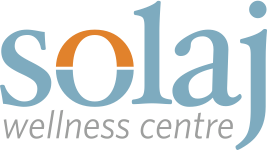What is Gout?
Gout is a type of acute inflammatory arthritis that is caused by a buildup of uric acid in the body. When the body has excess uric acid, sharp urate crystals begin to form in and around the joints, causing inflammation, swelling, redness and pain. This is what causes the extreme discomfort associated with gout.
Gout is a recurring condition that appears as very painful inflammatory attacks. These attacks can often wake you up in the middle of the night with the feeling that the affected joint, most commonly the big toe, is extremely hot and painful.
Gout most commonly affects the base of the big toe, but can also affect other joints in the feet, ankles, wrists and knees. Gout can also affect other parts of the body, however, this is much less common.
Common Symptoms
- Sudden, recurring painful attacks, most often in the big toe, sometimes also in other areas of the foot
- Pain is accompanied by redness or swelling around the joint
- The area around the joint is extremely sensitive; even the bedsheet can cause discomfort
What Causes Gout?
Scientific research is still being conducted to determine the underlying causes of gout. While gout is commonly associated with a high level of uric acid in the blood, not everyone with elevated levels actually experiences gout. Currently it is thought that gout may be triggered by one or more of the following: genetic predisposition; other medical conditions such as uncontrolled high blood pressure, high levels of cholesterol or fat (hyperlipidemia) or narrowing of blood vessels (arteriosclerosis); certain kinds of foods or medications.
Uric acid is produced through the chemical breakdown of purines, which occur naturally in our bodies and also can be found in higher amounts in certain foods such as organ meats, anchovies, legumes, mushrooms and asparagus (to name a few). Normally, uric acid is filtered out of the bloodstream through the kidneys and exits the body in the urine. However when our bodies produce more uric acid than our kidneys can process, urate crystals begin to form in the affected joints and those crystals cause inflammation and can cause very significant pain.
How is Gout Treated?
Gout is commonly treated with prescription medication. Often, medications such as allopurinol or colchicine are administered in an attempt to reduce the concentration of uric acid in the blood. When gout attacks occur, anti-inflammatories and/or painkillers are sometimes used to help control the pain. These medications can be effective in relieving the symptoms of gout, however, they can also cause further complications.
Cold Laser Therapy is an alternative that is natural, drug-free and without negative side effects. It is a pain-free therapy that transfers light energy to the cells of the body, triggering and accelerating the healing process. It can be very effective in the treatment of gout attacks.
Cold Laser Therapy for Gout: Step 1
Cold Laser Therapy for Gout: Step 2
Cold Laser Therapy for Gout: Step 3
Cold Laser Therapy can be very effective in eliminating pain and swelling from gout attacks. Typically, the effects of Cold Laser Therapy for gout are very quick (pain relief can occur within the first few treatments).
The trade-offs between commonly prescribed gout medication and Cold Laser Therapy is, that Cold Laser Therapy often costs more in out-of-pocket expenses ($300 to $500, minus the amount that your extended health care insurance plan reimburses) and it takes a bit more short term time investment (typically 5-7 half-hour treatments over 2 weeks). However, it is free from the potentially significant negative side effects and longer term risks of commonly prescribed gout medications.
At Solaj, we use the BioFlex Cold Laser Therapy system. The following article outlines some more information about specifically using the BioFlex system in the treatment of gout. Please note that LILT (Low Intensity Laser Therapy) is another term for Cold Laser Therapy.
Click here to view the full article [PDF]
Decreases Inflammation, Swelling, and Redness:
Speeds up the body’s natural inflammation phase and induces the repair phase of healing. This leads to visible decrease in inflammation, as well as a decrease in the painful sensitively surrounding the affected area that many gout sufferers experience.
Fast Pain Relief:
Gout is a condition that is considered very responsive to Cold Laser Therapy. It is common for gout sufferers to receive immediate pain relief after their first few treatments.
Safe and Effective Alternative to Medication:
Cold Laser Therapy has no known significant negative side effects, unlike some other gout medications which can cause GI tract distress, hepatitis, eczema, and complications with other medications.
Visit our Cold Laser Therapy Page to learn more about how the treatment works.
